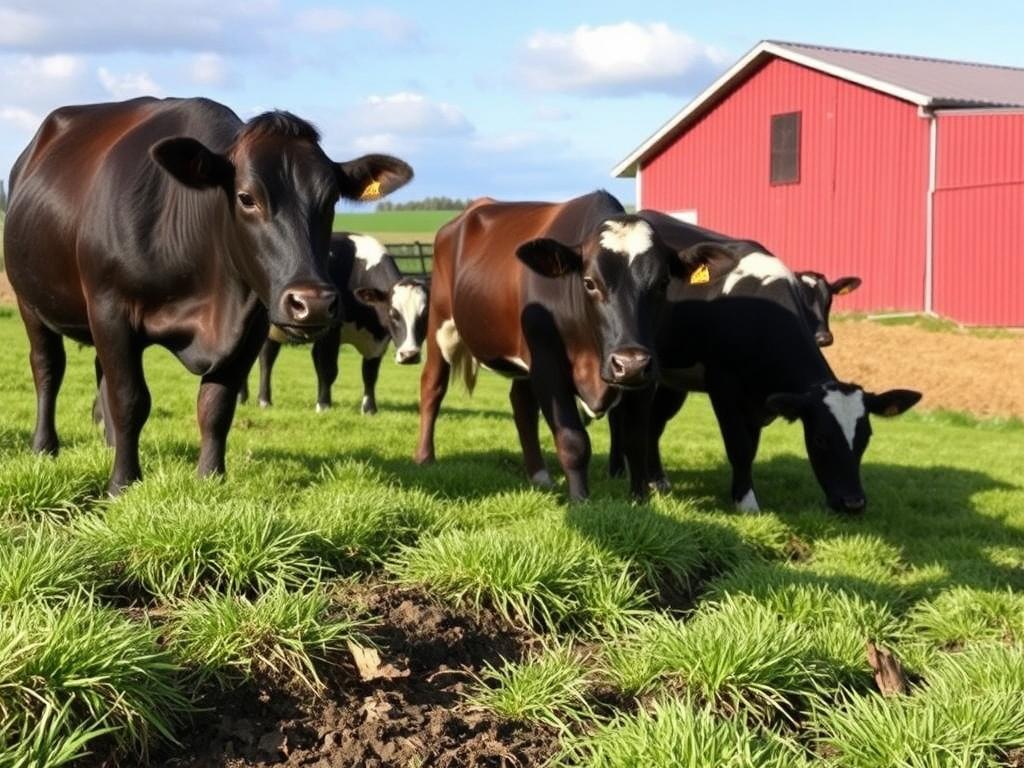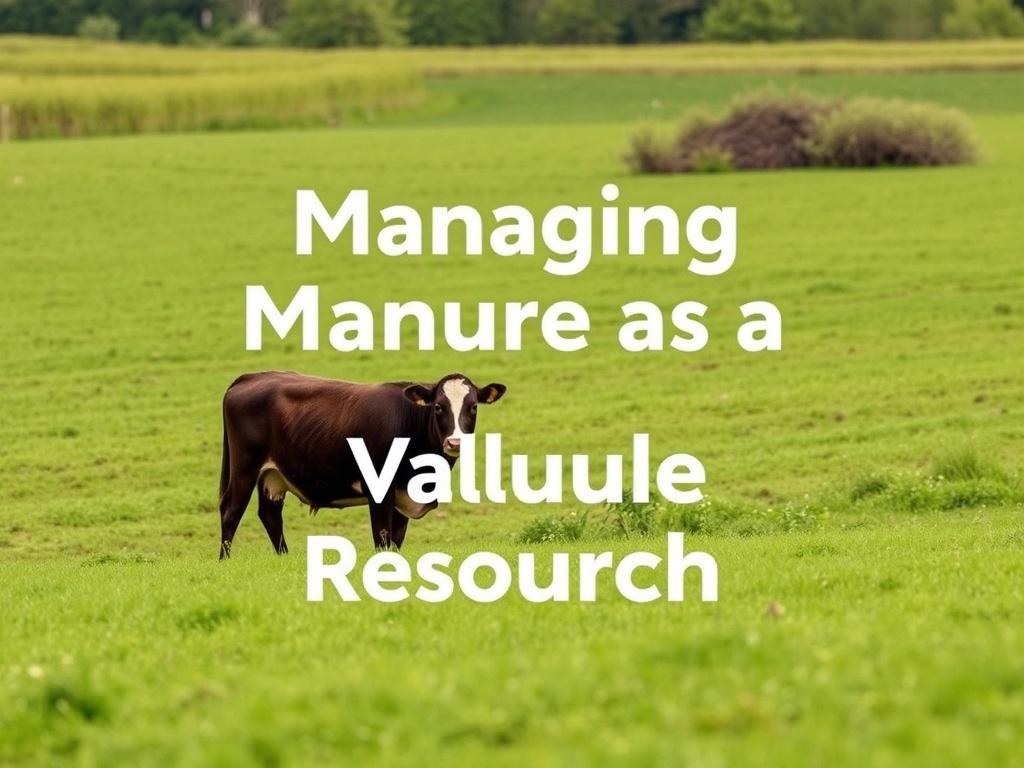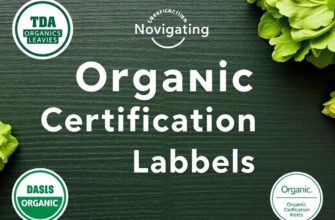Международное название:
Синонимы:
Характеристики:
| Сложность: | |
| Цикл развития: | |
| Световой режим: | |
| Режим полива: | |
| Температура: | |
| Почва: | |
| Ключевая черта: |
Цвет листвы
Цвет бутонов
Размеры цветка
Систематика:
| Домен: | |
| Царство: | |
| Отдел: | |
| Класс: | |
| Порядок: | |
| Семейство: | |
| Род: |
Manure is often pictured as a smelly byproduct of farming — something to be gotten rid of quickly. But if you pause and look closer, manure is more than waste: it’s a concentrated bundle of nutrients, organic matter, and biological activity that, when managed well, can boost soil health, cut fertilizer bills, reduce greenhouse gas emissions, and even create revenue streams. This article is for anyone who grazes livestock, raises poultry, operates a confined animal facility, or works in crop production and wants to treat manure as an asset rather than a problem. We’ll walk step by step through practical, science-based strategies for collection, storage, treatment, handling, and application — and show how manure can become a central tool in regenerative, profitable farming.
Managing manure takes planning, a bit of investment, and knowledge. But the rewards — healthier soils, stronger crops, and a lighter environmental footprint — make it worth the effort. I’ll speak plainly and give realistic ideas you can apply on a small farm or scale up to a larger operation. Expect practical tips, checklists, and tables you can refer to when making decisions about composting, anaerobic digestion, nutrient balancing, odor control, pathogen risk, and market opportunities. Let’s get started.
- Why Manure Management Matters
- Types of Manure and Their Characteristics
- Common manure types and quick notes
- Table: Typical nutrient ranges in common manures (approximate)
- Collecting and Storing Manure: Practical First Steps
- Checklist: Good manure storage features
- Treating Manure to Increase Value
- Composting: Simple, effective, and versatile
- Solid-liquid separation and drying
- Anaerobic digestion: energy and nutrient management
- Testing Manure and Matching It to Crop Needs
- Example calculation steps
- Application Methods and Timing
- Common application methods
- Odor, Pathogen, and Vector Management
- Environmental and Regulatory Considerations
- Economics: Costs, Benefits, and Value-Added Opportunities
- Table: Typical value propositions and costs (illustrative)
- Integrating Manure with Crop Rotations and Soil Health
- Best practices for integrating manure
- Marketing Manure-Derived Products
- Common Problems and Troubleshooting
- Troubleshooting table
- Climate and Emissions: Reducing Greenhouse Gases with Better Management
- Funding, Incentives, and Partnerships
- Practical On-Farm Planning: A Step-By-Step Guide
- Case Studies and Real-World Examples
- Lessons from successful farms
- Tools and Resources
- Useful tools and actions
- Future Trends and Opportunities
- Common Myths and Realities
- Practical Tips for Everyday Success
- Safety and Biosecurity
- Scaling Up: From Farm to Regional Solutions
- Measuring Success
- Next Steps and Getting Started
- Conclusion
Why Manure Management Matters
Manure is not simply excrement; it’s a rich mix of nitrogen, phosphorus, potassium, micronutrients, organic carbon, and living microorganisms. Left unmanaged, manure can pollute waterways, emit ammonia and greenhouse gases, attract pests, and create regulatory headaches. Managed properly, it can improve soil structure, increase water-holding capacity, support beneficial soil life, and supply a significant portion of a field’s fertility needs. The difference between pollution and productivity is management.
There’s also a growing economic story. Synthetic fertilizer prices are volatile and often high; integrating manure into a nutrient program can reduce fertilizer purchases. Some farms produce more manure than they need and can generate income by selling compost, bedding material, or even renewable energy from biogas. Regulatory frameworks increasingly require nutrient planning and runoff mitigation — proactive manure management can keep farms compliant and resilient.
Types of Manure and Their Characteristics
Not all manure is created equal. Understanding the type you have helps determine the best handling and use. Generally, manure falls into a few broad categories: solid manure from pasture or bedding, slurry from partially flushed systems, liquid manure in deep pits or lagoons, and processed products like compost or dried pellets.
Common manure types and quick notes
- Beef and dairy manure (with bedding): often bulky, high in organic matter, variable moisture.
- Swine slurry: higher in ammonium nitrogen, easier to store and pump but can create odor challenges.
- Poultry manure (layer, broiler): high in nitrogen and phosphorus, dries quickly if managed, can burn plants if applied fresh without dilution.
- Horse manure: heavy in carbon if bedding is straw or shavings; excellent for composting.
- Sheep and goat manure: smaller particle size, often used directly or composted.
Table: Typical nutrient ranges in common manures (approximate)
| Manure type | Dry matter (%) | Total N (%) | Available N (first year, %) | P (%) | K (%) |
|---|---|---|---|---|---|
| Beef (with bedding) | 15–30 | 0.3–1.0 | 20–50 | 0.1–0.4 | 0.2–0.6 |
| Dairy (liquid manure) | 5–12 | 0.4–1.2 | 30–70 | 0.2–0.6 | 0.3–0.8 |
| Poultry (layer) | 25–60 | 1.5–3.5 | 60–90 | 1.0–3.0 | 0.5–1.5 |
| Swine (slurry) | 5–10 | 0.5–1.5 | 40–80 | 0.3–0.9 | 0.3–1.0 |
| Horse (with straw) | 20–40 | 0.5–1.2 | 20–40 | 0.1–0.3 | 0.2–0.5 |
Note: Values vary with diet, bedding, storage, and sampling methods. Having manure tested is crucial before using it as a primary fertility source.
Collecting and Storing Manure: Practical First Steps
Start with collection methods that match your housing, labor, and equipment. Solid manure can be shoveled, scraped, or pushed with loaders. Slurry and liquid systems use pumps and pipes. The key is to capture manure in a place and form that allows you to manage it without creating runoff or odors that affect neighbors.
Once collected, storage should protect water quality, reduce odor, and allow you to time nutrient application. Storage can be short-term (temporary windrows), mid-term (covered stacks, bunkers), or long-term (concrete tanks, lined lagoons, covered anaerobic digesters). Make storage capacity part of your nutrient plan — you should have enough room to hold manure during periods when application is not possible (frozen ground, wet weather, or crop stages when spreading would be harmful).
Checklist: Good manure storage features
- Impermeable base or liner to prevent groundwater contamination.
- Drainage control around the storage area.
- Capacity for at least several months of production, ideally longer in cold climates.
- Covering or enclosing to reduce odor and nitrogen loss (covers, roofs, or composting enclosures).
- Separate handling for different manure types to maintain consistent product characteristics.
Treating Manure to Increase Value
Raw manure can be useful, but treatment often improves safety, handling, nutrient availability, and marketability. There are several common treatment pathways: composting, solid-liquid separation, drying, and anaerobic digestion. Each has pros, cons, and costs.
Composting: Simple, effective, and versatile
Composting is the controlled aerobic decomposition of manure and bedding into a stable, humus-like product. Proper composting reduces pathogens, weed seeds, and odors while concentrating nutrients and stabilizing organic matter. It’s particularly useful for poultry, horse, and livestock manures mixed with bedding.
The basic composting steps are: blend manure and carbon source to a workable moisture and carbon-to-nitrogen ratio (often around 25–30:1), build windrows or static piles, monitor temperature and moisture, turn periodically to reintroduce oxygen, and cure the pile until stable. Finished compost smells earthy, is dark and crumbly, and is safer and more pleasant to handle.
Solid-liquid separation and drying
Separators (screw presses, centrifuges, or mechanical screens) split slurry into a drier fiber fraction and a nutrient-rich liquid. The fiber can be composted, used as bedding, or sold. The clarified liquid is easier to transport or inject into soils. Drying (via passive aeration or mechanical dryers) can produce pellets or dried manure for sale as fertilizer.
Anaerobic digestion: energy and nutrient management
Anaerobic digesters break down manure in the absence of oxygen to produce biogas (methane + CO2) and a digestate. Biogas can be burned for heat, electricity, or upgraded to biomethane. Digestate is a nutrient-rich liquid and fiber fraction. Digesters reduce odors, partially stabilize nutrients, and can create revenue from energy sales or carbon credits. They require significant investment and operational know-how but fit well for mid- to large-scale operations or co-digestion with other organic wastes.
Testing Manure and Matching It to Crop Needs
A nutrient management plan starts with manure testing. A laboratory analysis tells you total nitrogen, ammonium-N, phosphorus, potassium, moisture, and sometimes metals or pathogens. Equally important is understanding nutrient availability: fresh manures release more nitrogen quickly, while compost releases N slowly.
Match manure nutrients to crop requirements by calculating the crop’s nitrogen and phosphorus needs and determining the fertilizer replacement value of the manure. Be mindful of phosphorus buildup: repeatedly applying manure to meet nitrogen needs can cause phosphorus to accumulate and risk runoff. Many regions require phosphorus-based application limits to avoid this problem.
Example calculation steps
- Obtain manure test results (N, NH4-N, P, K, percent dry matter).
- Estimate the fraction of N available the first year (based on manure type and handling).
- Calculate the amount of manure needed to meet a portion of the crop’s N requirement (often 50–100% depending on plan).
- Check the resulting P application against crop removal and regulatory limits.
- Adjust application rates or source supplemental fertilizer as needed.
Application Methods and Timing
How and when you apply manure affects its agronomic value and environmental risk. Surface application can lose ammonia to the air and increase odor. Incorporation (tillage) or injection reduces ammonia loss and the risk of runoff. Timing matters: apply when crops can make use of nutrients and when the ground is not frozen or saturated. In many places, spreading on frozen ground near waterways is prohibited.
Common application methods
- Surface broadcast (trailing hose, splash plate): simple, but higher ammonia losses.
- Injection or subsurface banding: places manure under the soil surface — reduces odors and losses, increases nitrogen efficiency.
- Dragline or shallow incorporation: compromise between broadcast and injection.
- Topdressing with compost: easy and good for organic matter; less immediate N availability.
Odor, Pathogen, and Vector Management
Odor and pathogens are real community concerns. Many treatment and management practices reduce both. Composting, anaerobic digestion, rapid incorporation, and storage covers lower odor emissions. Maintaining good hygiene and minimizing runoff reduce pathogen spread. Also consider biosecurity: control wildlife access to manure storage and treatment areas and avoid exposing animals to untreated manure in feed areas.
Environmental and Regulatory Considerations
Regulations vary, but common themes include setbacks from water bodies, limits on nutrient application rates, storage capacity requirements, and manure handling rules on frozen or snow-covered ground. Creating a written nutrient management plan — documenting manure sources, test results, storage volume, and application schedules — often satisfies regulatory requirements and helps you make better decisions.
Some incentives and cost-share programs exist to help implement manure management improvements, such as composting facilities, storage upgrades, and digester installations. Check with local extension services, conservation programs, and agricultural agencies.
Economics: Costs, Benefits, and Value-Added Opportunities
Manure management is not free, but smart practices can yield savings and income. Savings come from reduced fertilizer purchases, improved crop yields from better soil health, and avoided costs of environmental compliance or manure disposal. Income can come from selling compost, bedding material, or energy. Consider labor, equipment, and infrastructure costs against these benefits.
Table: Typical value propositions and costs (illustrative)
| Practice | Typical costs | Primary benefits | Revenue potential |
|---|---|---|---|
| Composting windrows | Moderate (turning equipment, pads) | Stable product, reduced pathogens/odors | Medium — compost sales |
| Solid-liquid separation | Moderate to high (equipment) | Easier handling, fiber product | Low to medium — bedding/fiber sales |
| Anaerobic digester | High (construction, operation) | Energy, odor control, stabilization | High — energy sales, credits |
| Manure injection equipment | Moderate (implements) | Higher nutrient use efficiency, lower odor | Indirect — fertilizer savings |
Integrating Manure with Crop Rotations and Soil Health
Manure is a soil builder. Regular applications increase soil organic matter, create better aggregation, and support beneficial microbes. Think of manure as part of a broader soil health program: combine it with cover crops, reduced tillage, and crop rotation to amplify benefits. For example, applying compost in a rotation with deep-rooted cover crops can help lock carbon, improve infiltration, and suppress compaction.
Pay attention to salt buildup in arid areas: repeated surface applications without leaching can concentrate salts. Test soil regularly and adjust management.
Best practices for integrating manure
- Use manure as a complement to other organic matter sources and cover crops.
- Rotate fields receiving manure to avoid nutrient hotspots.
- Monitor soil P and plan applications to avoid long-term buildup.
- Time applications to match crop uptake whenever feasible.
Marketing Manure-Derived Products
There’s growing demand for organic amendments. Finished compost, heat-treated poultry manure, and dried pellets can be sold to gardeners, landscapers, and organic farmers. Packaging, testing, and labeling increase marketability. Small-scale producers can sell by the trailer load; larger producers can invest in screening and bagging. Consider partnering with local municipalities, landscapers, or nurseries.
Common Problems and Troubleshooting
Manure management can be messy. Here are common issues and fixes:
- Odor complaints: consider covers, composting, or injection; reduce time between spreading and incorporation.
- Runoff or ponding: improve storage containment, install buffers, and avoid spreading before heavy rains.
- Uneven nutrient distribution: calibrate spreading equipment and use manure tests to guide application.
- Pathogen or weed seed survival in compost: ensure adequate temperatures and turning frequency during composting.
Troubleshooting table
| Issue | Likely cause | Action |
|---|---|---|
| Crop burn after spreading | Fresh, high-ammonia manure applied to young plants | Delay application until pre-plant or use composted manure; dilute or incorporate |
| Excessive phosphorus in soil | Repeated manure applications based on N needs | Switch to P-based limits, export manure, or apply to P-deficient fields |
| Manure storage leaks | Compromised liner, poor location | Repair liner, improve containment, relocate future storage uphill of water |
Climate and Emissions: Reducing Greenhouse Gases with Better Management
Manure emits methane, nitrous oxide, and ammonia — all potent contributors to climate change and air quality issues. Some management changes reduce emissions: composting aerated piles lower methane but can increase nitrous oxide if not managed well; anaerobic digestion captures methane for energy; injection reduces ammonia volatilization; and rapid incorporation of liquid manure reduces volatilization. Measuring and documenting emission reductions can also open doors to incentives and carbon credit programs.
Funding, Incentives, and Partnerships
Many governments and conservation organizations offer grants or cost-share programs for manure storage, composting facilities, digester installations, and equipment upgrades. Farmers often partner with municipalities (co-digestion of food waste), other farms (regional composting hubs), or research institutions. Explore local extension services, agricultural agencies, and conservation districts for technical assistance and program information.
Practical On-Farm Planning: A Step-By-Step Guide
Here’s a simple plan you can adapt to your operation:
- Inventory manure types, annual production, current storage, and equipment.
- Test manure and soils to establish nutrient baselines.
- Decide on goals: reduce fertilizer costs, sell compost, produce energy, improve soil health, or minimize environmental risk.
- Choose treatment and storage options that fit scale and goals (composting, separation, digester, storage upgrade).
- Create a nutrient management plan mapping where and when manure will be applied and at what rates.
- Invest in or rent application equipment that matches your plan (manure spreader, injector, dribble hose).
- Monitor outcomes: soil tests, crop responses, odors, and neighbor feedback.
- Adjust the plan as needed and document changes for compliance and improvement.
Case Studies and Real-World Examples

Real farms make the best teachers. A dairy in the northern plains converted to scraped manure storage with anaerobic digestion and sells electricity to the grid while using digestate to fertilize corn. A mixed livestock farm in the Midwest built a composting pad, turned manure and bedding into a marketable compost, and cut bedding costs by reusing fiber. A cluster of poultry farms pooled resources to install a drying and pelletizing line, producing a stable fertilizer product sold to landscapers. Each solution is shaped by farm size, community context, and market access.
Lessons from successful farms
- Start small and scale up: pilot projects reveal surprising costs and labor needs.
- Engage neighbors early to reduce complaints and build community support.
- Document everything: tests, applications, and sales build credibility and compliance.
- Be flexible: markets change, weather disrupts plans, and management must adapt.
Tools and Resources
Make use of extension services, online nutrient calculators, manure testing labs, and equipment suppliers. Many universities provide decision tools for manure application rates, compost recipes, and digester feasibility. Professional nutrient management planners can help with regulatory compliance and farm-level planning.
Useful tools and actions
- Manure testing labs — essential for accurate nutrient planning.
- Equipment rental or custom application services — lower capital needs.
- Extension publications and workshops — local, practical guidance.
- Financial advisors for feasibility studies on digesters or composting facilities.
Future Trends and Opportunities
The future for manure management looks promising. Advances in sensor technology, precision application, and nutrient recovery are making manure handling more efficient. Markets for organic soil amendments and renewable natural gas are growing. Policy incentives for carbon sequestration and emission reductions may create additional revenue streams. Farms that view manure as a resource will be better positioned to take advantage of these trends.
Common Myths and Realities
There’s plenty of misinformation out there. Let’s bust a few common myths:
- Myth: All manure smells horrible and must be buried or removed. Reality: Treatment and timely incorporation drastically reduce odor and create valuable products.
- Myth: Manure always supplies all the nitrogen crops need. Reality: Nutrient content and availability vary; manure often supplies only a portion of a crop’s nitrogen needs and may oversupply phosphorus if not managed.
- Myth: Composting is magic and removes all problems. Reality: Composting improves many aspects but requires proper temperature and turning to eliminate pathogens and weeds.
Practical Tips for Everyday Success
Here are small, practical habits that make a big difference:
- Keep accurate records of manure production, tests, and applications.
- Test soils regularly and adapt rates to soil P and K levels.
- Match manure application to fields that will benefit most — low-P fields, deep-rooted crops, or cover crop sequences.
- Consider contractual or custom-applicator options if handling excess manure is a challenge.
- Invest in training for staff on composting and safe handling practices.
Safety and Biosecurity
Handle manure with care. Use PPE when dealing with raw manure, especially in enclosed spaces where gases can accumulate. Keep people and animals away from storage edges and open tanks. Implement measures to prevent pathogens from entering feed or water supplies, and clean equipment between operations to reduce spread.
Scaling Up: From Farm to Regional Solutions
Individual farms sometimes face too much manure relative to nearby cropland. Regional solutions — composting hubs, centralized anaerobic digesters, or manure-to-energy cooperatives — can be effective. These require collaboration, logistics planning, and often public-private partnerships. Regional approaches can convert a local waste problem into a community asset: energy, soil amendments, and economic activity.
Measuring Success
How do you know your manure program is working? Track a mix of agronomic, environmental, and economic indicators:
- Soil organic matter and nutrient levels over time.
- Crop yield and quality compared to historical baselines.
- Fertilizer cost savings and income from manure products.
- Incidents of runoff, odor complaints, or regulatory issues (aim for zero).
- Greenhouse gas emissions if you participate in measurement or incentive programs.
Next Steps and Getting Started

If you’re ready to transform manure from burden to resource, start with a simple plan: collect samples for lab analysis, map storage and spreading capacity, and set achievable goals for the next 12 months. Reach out to local extension or conservation agencies for technical help, and consider a pilot compost or separation project to learn the practicalities before investing heavily.
Conclusion

Managing manure as a valuable resource is both practical and transformative. With thoughtful collection, storage, testing, treatment, and application, manure can feed soils, enhance crop yields, lower input costs, and reduce environmental impacts. Whether you compost a few piles, install separators, or explore anaerobic digestion, every step toward better manure management builds farm resilience and contributes to healthier ecosystems. Start small, plan carefully, and treat manure not as waste but as an opportunity to close nutrient cycles and strengthen your farming enterprise.
Оценивайте статью, делитесь материалом с друзьями в социальных сетях, а также высказывайте свое мнение в обсуждении ниже! ![]()







